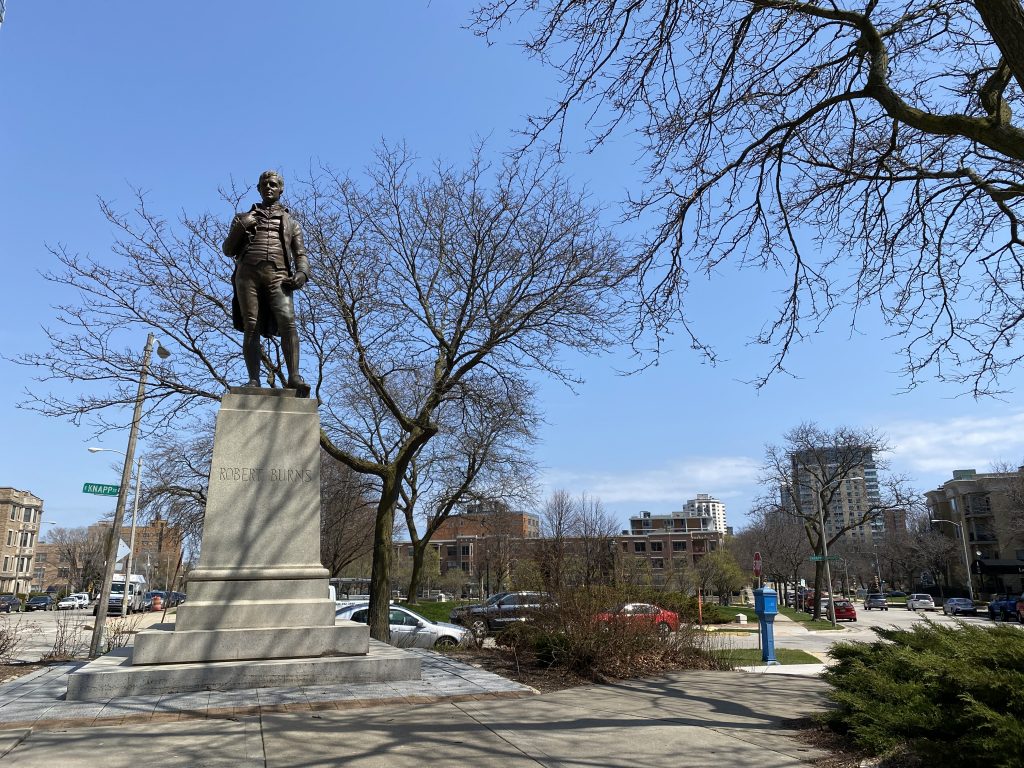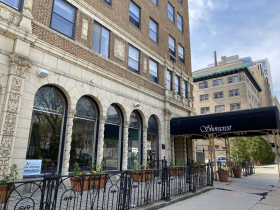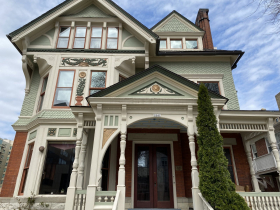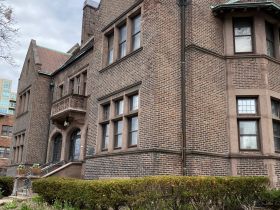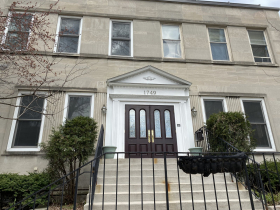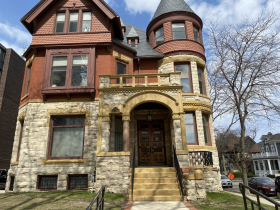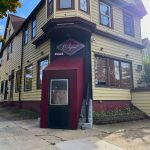Stroll Down Milwaukee’s Gold Coast
Prospect Avenue was also known as ‘Kings Row’ and many of those old mansions are still standing.
Distance: Two miles
Start: At the corner of N. Prospect Ave. and E. Lafayette Pl.
Parking: On the street
We drive north on Prospect Avenue in a hurry. We watch the traffic and pause at the occasional red light. We buzz past a series of magnificent homes as we focus on everything ahead of us. We seldom glance sideways at the parade of homes dating back to the 1800s.
According to Carl Baehr in Milwaukee Streets: The Stories Behind Their Names, “James H. Rogers named this street in 1847. The street, on the bluffs, offered a pleasing view, or prospect of Lake Michigan.” Rogers might have underestimated the worth of his property that extended along Prospect from Brady, south to Juneau, and west to Humboldt. He valued his stake at a mere $1,200.
Prospect prospered as more and more local fortunes were made and those wealthy citizens built mansions on this gilded avenue. Eventually these captains of industry migrated north to Shorewood and Whitefish Bay and many of their elegant homes were removed to make room for apartments. Other homes on the avenue were converted to rooming houses, a familiar story as Milwaukee’s population continued to grow and so did the need for housing. Some of the homes that remained were converted to offices.
To appreciate Prospect, you need to park the car and walk. As you saunter south you will see a few of the remaining castles. There are more, hiding in plain sight on the streets east of Prospect. Take time to explore because you will discover some of the finest examples of late 1800s homes still standing, not just in Milwaukee, but in the entire Midwest.
The Walk
Start at the corner of Lafayette and Prospect and walk south. After you pass “apartment row,” a line of elegant high-rise apartments, you will come to the Shorecrest Hotel, one of the earliest high-rise developments on the bluff. At 1930 take a look at the Park Lane Apartments, a high-rise complex designed in art deco style.
Across the street at 1841, the former Sanford Kane residence is a fine example of Queen Ann style and was the home of the Kane family. It is written that they once owned most of the neighborhood. Note the complex details on this home, the bays, gables, dormers, and the exceptional chimneys.
Across the street, St. John’s On the Lake, a senior living community, engulfed an entire block, one building at a time, including the most recent addition, the North Tower. The South Tower sits on land which was once the site of a Civil War Camp, Camp Reno.
At 1749 look for the home with limestone walls built in 1876 for lumber baron William H. Bradley. When you come to Brady Street, look for the Victorian mansion on the corner at 1681, the former E. D. Adler residence, now the home of Roots Counseling Services. Further south at 1584, the Wisconsin Conservatory of Music is easily recognized by its four fluted Corinthian columns. It was a private home built for Charles L. McIntosh, and included a large music room and a dance hall done in French 18th century style. As Zimmermann wrote, “When the house was new, a newspaper article called it a ‘veritable paradise’”
At 1550, look for a large home in the style of an Elizabethan manor home made of brick and limestone, and at 1537, look for the red brick house with its two-story sculptural doorway arch. At 1451, the former First Church of Christ Scientist, now the Renaissance Place, is easily recognized by four Doric columns at the entrance and its classic exterior. At 1363, take a look at the large five-story Victorian home which was constructed by grain broker Gilbert E. Collins, who never lived in it. In 2018 this home with eight bedrooms and five fireplaces was the Breast Cancer Showhouse.
At Prospect and Knapp take a break in Burns Commons and contemplate the Robert Burns Statue, a replica of a statue in Kilmarnock, Scotland. It was a gift to Milwaukee in 1909 from James Bryden, who wanted to city to have a statue of his favorite poet.
Across the street you can see the infamous “Spite House,” the source of a controversy that started after Jason Downer built his magnificent home at 1201 in 1874. Three years later, Francis Hinton built a three-story townhouse at 1229-31 that blocked Downer’s view of the lake and the statue in Burns Commons. Downer retaliated by building the home at 1223 adjacent to Hinton’s townhouse. This home blocked part of Hinton’s lake view and obscured his view to the south. As Zimmermann wrote, “The ‘reply house’ is so close to its neighbor that it would be difficult to squeeze a butter knife between them.” And so the home has become known as the “Spite House.”
Across the street at 1216, you will see the Stephen Harrison home, built in 1866 and the oldest home on Prospect. It has a lovely cast iron fence that spans two sides of the property.
There’s really no other walk like this in Milwaukee, offering a window into Milwaukee’s early history and close-up views of many of the mansions built by wealthy citizens in the mid- to late-1800s.
Along the Walk
Cari Taylor-Carlson is the author of Milwaukee Walks: 20 Choice Walks in a Classy City.
If you think stories like this are important, become a member of Urban Milwaukee and help support real, independent journalism. Plus you get some cool added benefits.
Milwaukee Walks
-
Kilbourntown Tour Offers Tons of History
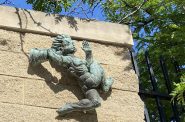 Oct 8th, 2023 by Cari Taylor-Carlson
Oct 8th, 2023 by Cari Taylor-Carlson
-
Riverwest Is a Melting Pot
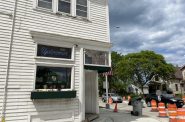 Aug 25th, 2023 by Cari Taylor-Carlson
Aug 25th, 2023 by Cari Taylor-Carlson
-
Layton Boulevard Has Overlooked History
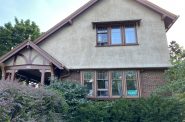 Jul 23rd, 2023 by Cari Taylor-Carlson
Jul 23rd, 2023 by Cari Taylor-Carlson


